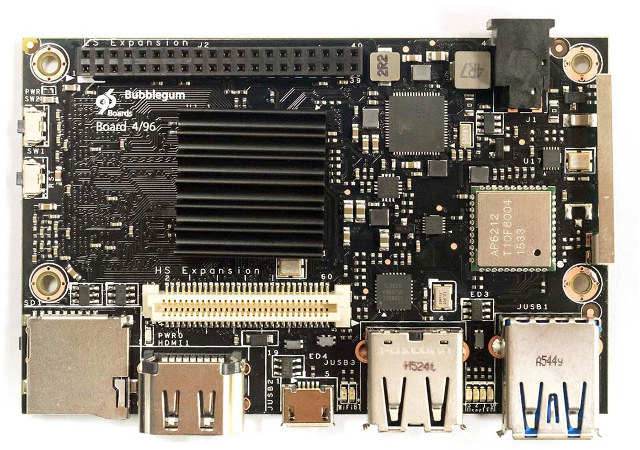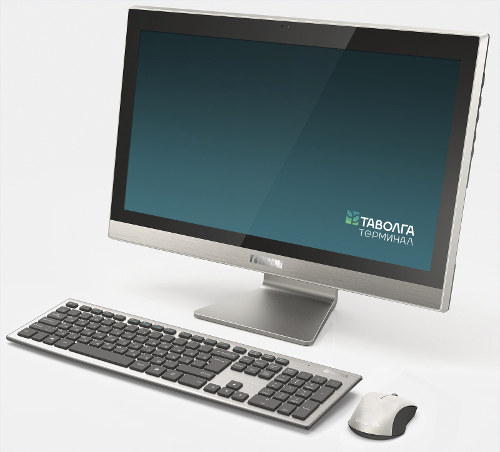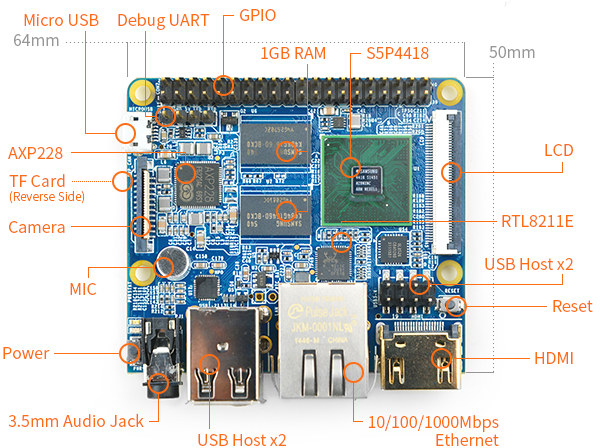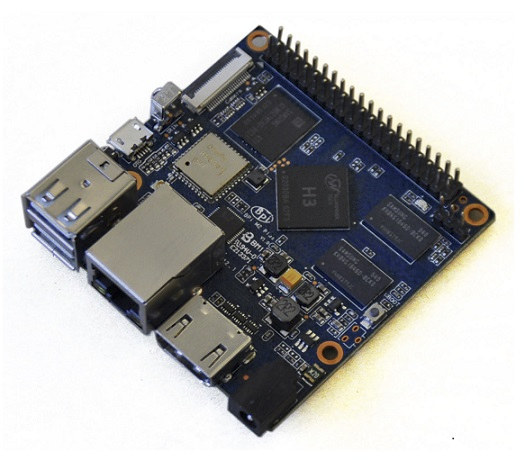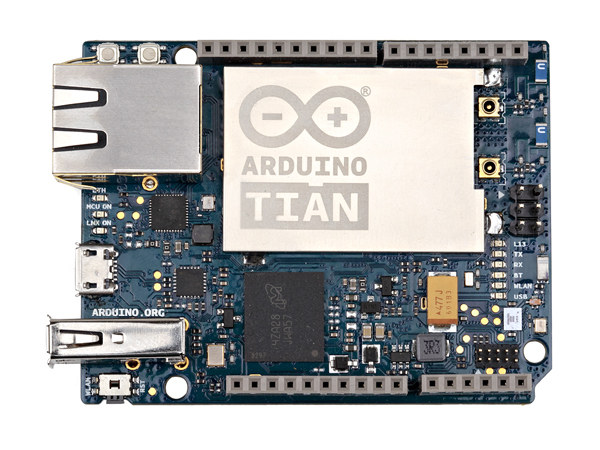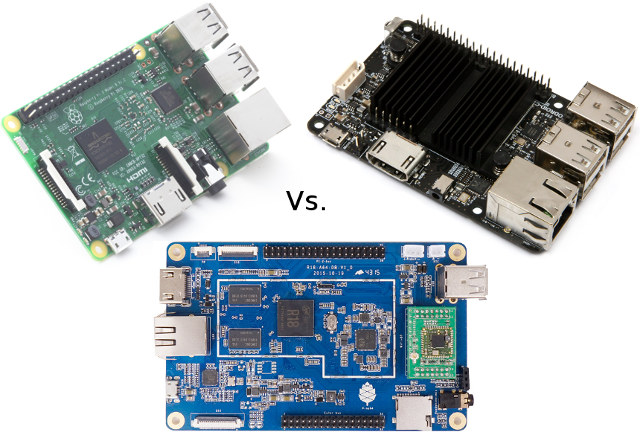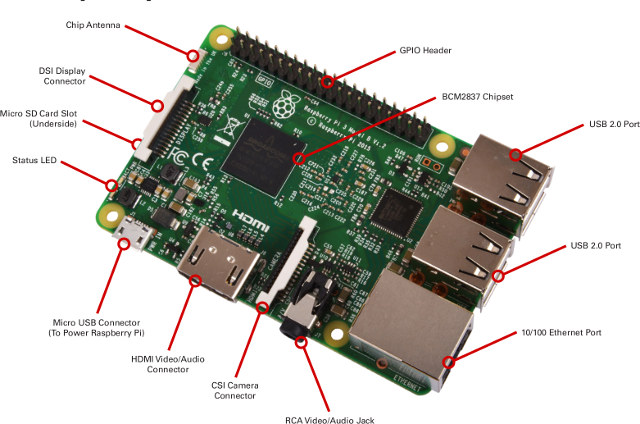Bubblegum-96 development board was unveiled nearly a year ago, and finally the Actions Semi S900 quad core Cortex A53 board compliant with Linaro’s 96Boards specifications will soon go on sale for $89. Most 96Boards development boards take a while to come to market, likely due to the software requirements. uCRobotics Bubblegum-96 specifications: SoC – Actions Semi S900 quad core Cortex A53 @ up to 1.8 GHz with PowerVR G6230 GPU @ 600 MHz System Memory – 2GB LPDDR3 @ 800 MHz Storage – 8 GB eMMC 4.5 flash + micro SD v3.0 socket Video Output – HDMI 1.4 with HDCP up to 4K, MHL 2.1 up to 4K via USB connector Connectivity – Wi-Fi 802.11 b/g/n, Bluetooth 4.0 USB – 1x USB 2.0 port, 1x USB 3.0 port, 1x micro USB 2.0 port Expansion 40-pin LS (Low Speed) Expansion connector – UART, I2C, 12x GPIOs, SPI, PCM, 1.8V, +5V, GND… […]
Embedded Linux Conference 2016 and OpenIoT Summit 2016 Schedule
The Embedded Linux Conference 2016 and the OpenIoT summit 2016 will take place on April 4 – 6, 2016 in San Diego, California, and over 800 attended will meet including kernel & system developers, userspace developers, and product vendors. The Linux Foundation has recently published the schedule, so I’ve had a look at some of the talks, and designed my own virtual schedule to find out more the current development focus although I won’t attend. Monday April 4 10:40am – 11:30am – Linux Connectivity for IoT by Marcel Holtmann, Intel OTC There are many connectivity solutions that available for IoT. For example Bluetooth Low Energy, 802.15.4, Zigbee, OIC, Thread and others. This presentation will provide and overview of the existing technology and upcoming standard and how they tie into the Linux kernel and its ecosystem. 11:40 – 12:30 – BoF: kernelci.org: A Million Kernel Boots and Counting by Kevin Hilman, […]
Tavolga Terminal TP-T22BT Debian 8 All-in-One Computer is Powered by Baikal-T1 MIPS Processor
A Russian company called Baikal Electronics announced it was working on Baikal T1 dual core MIPS P5600 to provide an alternative to US based Intel and AMD processor last year, not too long after Edwards Snowden revaluations about the NSA malpractices. Good progress has been made as T-Platforms has now launched Tavolga Terminal TP-T22BT All-in-One computer with a 21.5″ display, up to 8 GB RAM, and the Baikal T1 processor running Debian 8. TP-T22BT specifications (derived from product brief in Russian): Processor – Baikal dual core MIPS 5600 processor @ 1.0 GHz with 1MB L2 cache GPU – Silicon Motion SM750 GPU with 16MB video memory, 2D graphics acceleration System Memory – 2 to 8GB DDR3 Storage – Optional 8GB NAND flash, optional 8GB SSD, and optional 2.5″ SATA drive (Baikal-T1 has a built-in SATA interface) Display – 21.5″ IPS Full HD (1920×1080) display with LED backlight Audio – PCM2912A […]
$30 NanoPi-M2 Board Packs Raspberry Pi 2 Hardware Features in a Smaller Form Factor
FriendlyARM had already launched two NanoPi boards powered by Samsung S5P4418 quad core processor, namely NanoPi 2 and NanoPi2 Fire, that were especially interesting due to their small size (75 x 40 mm) for the features including HDMI output, a camera interface, and either WiFi + Bluetooth or Ethernet. The company is now back with a third larger board, but still compact, removing the wireless module, but adding an audio jack and more USB ports, while keeping the price about the same. Meet NanoPi-M2: SoC – Samsung S5P4418 quad core Cortex A9 processor @ 400 MHz to 1.4GHz with Mali GPU including two pixel processors, and a geometry processor. System Memory – 1GB 32-bit DDR3 Storage – 1x Micro SD Slot Connectivity – Gigabit Ethernet RJ45 port (via RTL8211E) Video Output / Display I/F- 1x HDMI 1.4a, 0.5 mm pitch SMT FPC seat for type-A full-color LCD (RGB: 8-8-8) with […]
Banana Pi BPI-M2+ is another Compact Allwinner H3 Development Board
Allwinner H3 processor has become popular on hobbyist boards thanks to several Orange Pi board, especially Orange Pi PC and Orange Pi One due to their ultra-low prices, respectively $15 and $10. Olimex is also involved with their H3-OLinuXino-NANO board, and now at least one more company is about to release another Allwinner H3 board with SinoVoip’s Banana BPI-M2+. Banana BPI-M2 Plus specifications: SoC – Allwinner H3 quad core Cortex A7 @ 1.2 GHz with an ARM Mali-400MP2 GPU up to 600 MHz System Memory – 1GB DDR3 Storage – micro SD card slot up to 64GB, optional 8GB eMMC flash Video & Audio Output – HDMI with CEC support Connectivity – Gigabit Ethernet, optional 802.11 b/g/n WiFi (AP6212). More options: AP6181, AP6335 USB – 2x USB 2.0 host ports, 1x micro USB OTG port Camera – CSI Interface Expansions – 40-pin Raspberry Pi compatible header Debugging – 3-pin UART […]
Arduino Tian Board Combines Atmel D21 MCU, Atheros AR9342 WiSoC, and CSR8510 Bluetooth 4.0 SoC
Arduino Tian is an update of Arduino Yun board, mainly replacing Atmel ATMega32u4 8-bit MCU and Atheros AR9331 WiSoC with more recent Atmel SAMD21 32-bit Cortex M0 MCU and Atheros AR9342 WiSoC with support for dual band 802.11 b/g/n WiFi, as well as CSR8510 Bluetooth 4.0 SoC. Arduino Tian specifications: MCU part MCU – Atmel SAMD21G18 ARM Cortex-M0 MCU @ 48 MHz with 256KB flash and 32KB SRAM Digital I/O Pins – 20x GPIOs with 12x PWM and UART Analog Input Pins – 6x 12-bit ADC channels Analog Output Pins – 1x 10-bit DAC DC Current per I/0 – 7mA Operating Voltage – 3.3V “Linux” SoC part SoC – Atheros AR9342 MIPS74Kc processor @ 535 MHz System Memory 64MB DDR2 Storage – 16 MB Flash for firmware, 4 GB eMMC Flash for data Connectivity – 10/100M Ethernet, dual band 802.11n 2×2 2.4/5 GHz WiFi, Bluetooth 4.0 + EDR (CSR8510) USB […]
Raspberry Pi 3, ODROID-C2 and Pine A64+ Development Boards Comparison
Raspberry Pi 3 and hardkernel ODROID-C2 launched the same day, and together with Pine A64/A64+, are the only ultra low cost (<$40) 64-bit ARM development boards available or soon-to-be available, so I’ve decided to make a comparison of the three boards the same way I did with ~$10 boards with a Raspberry Pi Zero, C.H.I.P, and Orange Pi One comparison. I’ve used features of Pine A64+ instead of Pine A64 since features and price are closer to the other two boards. Text highlighted in green means a board is clearly better than the other two for a given features, while a red highlight means it’s the weakest of the three. Raspberry Pi 3 ODROID-C2 Pine A64 Plus Processor Broadcom BCM2837 quad core Cortex A53 processor @ 1.2 GHz(4x ~2760 DMIPS) Amlogic S905 quad core Cortex A53 processor @ 2.0 GHz(4x ~4600 DMIPS) Allwinner A64 quad core Cortex A53 processor @ […]
Raspberry Pi 3 Board is Powered by Broadcom BCM2837 Cortex A53 Processor, Sells for $35
Raspberry Pi 3 board was first found on the FCC website, and thanks to various other leaks we had a pretty good idea of the board specifications including a Broadcom 64-bit ARM processor coupled with 1GB RAM, WiFi and Bluetooth, as well as basically the same features and ports as Raspberry Pi 2 Model B. But with the fourth anniversary of the Raspberry Pi Model 1 board, Raspberry Pi 3 has now officially been launched, and you can now purchase the board for $35. Raspberry Pi 3 specifications: SoC – Broadcom BCM2837 64bit ARMv8 quad core Cortex A53 processor @ 1.2GHz with dual core VideoCore IV GPU @ 400 MHz supporting OpenGL ES 2.0, hardware-accelerated OpenVG, and 1080p30 H.264 high-profile decode. Capable of 1Gpixel/s, 1.5Gtexel/s or 24GFLOPs with texture filtering and DMA infrastructure System Memory – 1GB LPDDR2 Storage – micro SD slot Video & Audio Output – HDMI 1.4 […]


